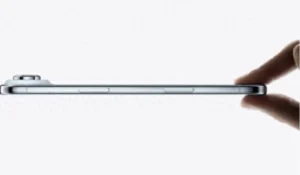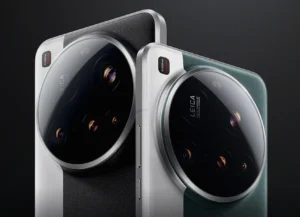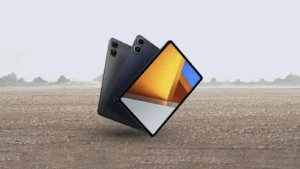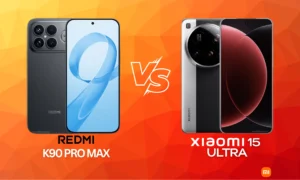iPhone 16 Pro Max vs. Xiaomi 14 Ultra: Which Flagship Reigns Supreme?

iPhone 16 Pro Max vs. Xiaomi 14 Ultra: Is the iPhone Truly Superior, Or Just Hype and Status?
In the cutthroat arena of high-end smartphones, two titans are duking it out in 2025: Apple’s iPhone 16 Pro Max and Xiaomi’s 14 Ultra. Both devices represent the pinnacle of their respective ecosystems, iOS and Android, promising stellar performance, cutting-edge cameras, and premium designs. But there’s always that lingering question, isn’t there? Is the iPhone really that much better from a technical standpoint and user experience, or is its dominance largely fueled by years of carefully cultivated hype and status? We’re going to break down these two beasts side-by-side, looking at design, display, performance, cameras, battery, software, and overall value, with a critical eye to see if the iPhone truly lives up to its reputation, or if the Xiaomi 14 Ultra is the more compelling contender.
1. Design and Build Quality
iPhone 16 Pro Max
Apple’s latest, the iPhone 16 Pro Max, sticks to its iconic design language. We’re talking a Grade 5 titanium frame, those flat edges we’ve all gotten used to, and a slick glass build featuring the latest generation Ceramic Shield. It measures up at 163 x 77.6 x 8.3 mm and tips the scales at 227 grams. It’s a substantial device, no doubt, but it feels well-balanced in hand.
The minimalist aesthetic includes the ever-present Dynamic Island up front and a distinctive triangular camera bump on the rear. Apple’s color palette is typically sophisticated, with options like Black Titanium, White Titanium, Natural Titanium, and Desert Titanium, all boasting a premium finish that screams luxury. Of course, it’s got that IP68 rating for water and dust resistance – up to 6 meters for 30 minutes. Plus, Apple’s thrown in the new Camera Control Button, a touch-sensitive dedicated button for camera functions, and the ever-useful customizable Action Button.
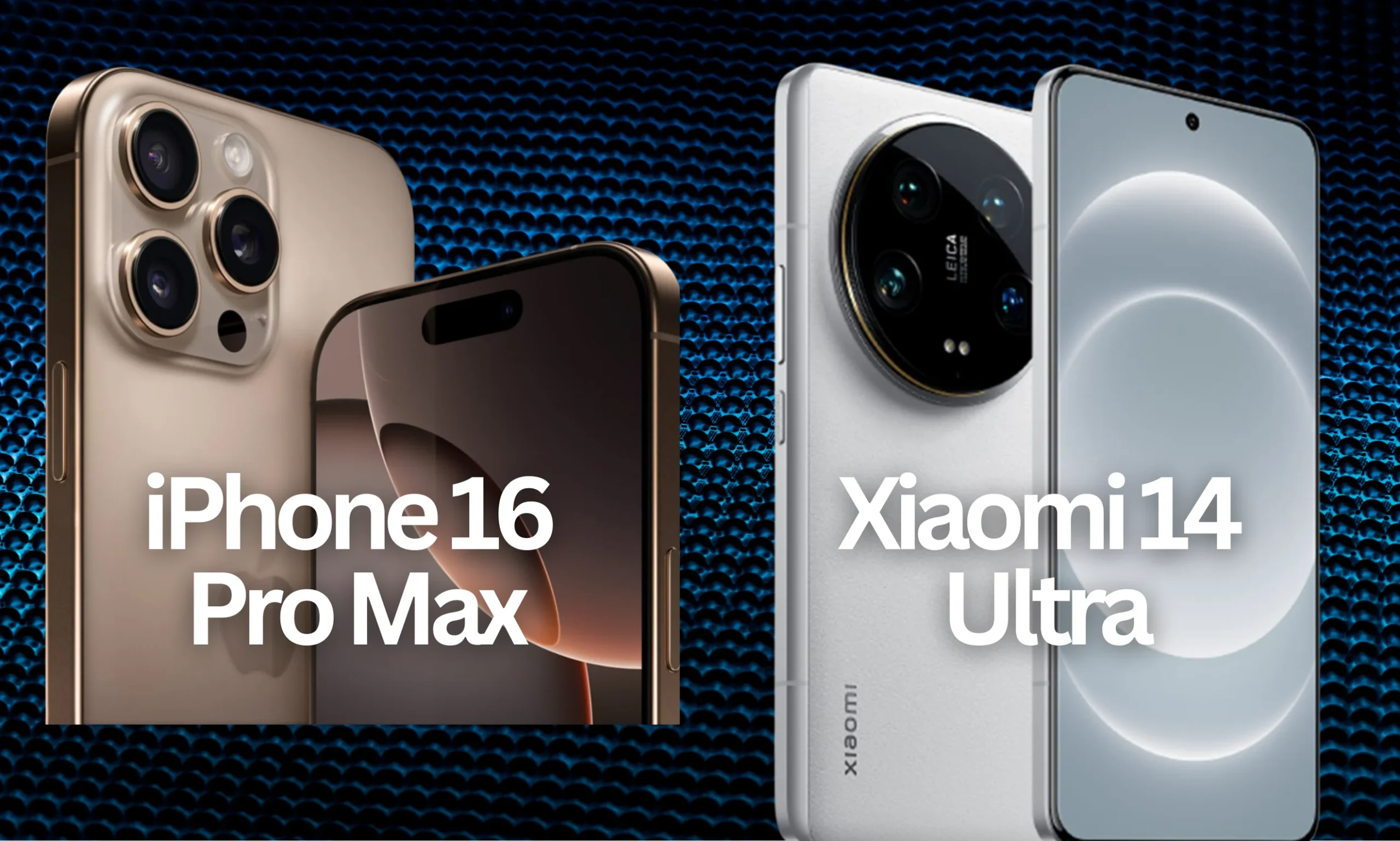
Xiaomi 14 Ultra
The Xiaomi 14 Ultra, on the other hand, goes for a more distinctive look, with a clear nod to its photography prowess. It’s slightly more compact at 161.4 x 75.3 x 9.2 mm and a touch lighter at 219.8 grams. What really sets it apart is the rear finish – you can choose between glass or, interestingly, eco-leather. That eco-leather option adds a nice texture and grip, a welcome departure from the often slippery feel of many flagships.
The massive circular camera module on the back is hard to miss; it dominates nearly a third of the device and is a clear collaboration with Leica, reinforcing its photographic identity. It features a flat display with slim bezels and a neat punch-hole for the selfie camera. Like the iPhone, it boasts IP68 certification, but it also throws in an IR blaster for remote control functions, which is a neat bonus. Available colors are typically black, white, and blue, with that eco-leather option adding a bit of flair.
Comparison: When it comes to design, the iPhone 16 Pro Max offers that polished, minimalist aesthetic that many associate with premium status. Its Ceramic Shield is, according to Apple, top-tier for drop and scratch resistance. However, the Xiaomi 14 Ultra feels more adventurous with its eco-leather option and a design that’s clearly geared towards photography enthusiasts. If you value functionality and a bit of flair over pure prestige, the Xiaomi might just win you over. The iPhone has the brand recognition, sure, but the Xiaomi is absolutely in the same ballpark for build quality.
2. Display
iPhone 16 Pro Max
Apple equips the 16 Pro Max with a 6.9-inch LTPO Super Retina XDR OLED display. It packs a resolution of 2868 x 1320 pixels, resulting in a sharp 460 PPI. It plays nice with HDR10 and Dolby Vision, and can crank out a blinding 2000 nits of peak brightness, making it a champ for outdoor viewing. The adaptive refresh rate, ranging from 1Hz to 120Hz, ensures buttery-smooth animations while keeping battery drain in check. The flat screen with those slim bezels and the Dynamic Island creates a pretty immersive experience, although that notch-like cutout is still more intrusive than a simple punch-hole.
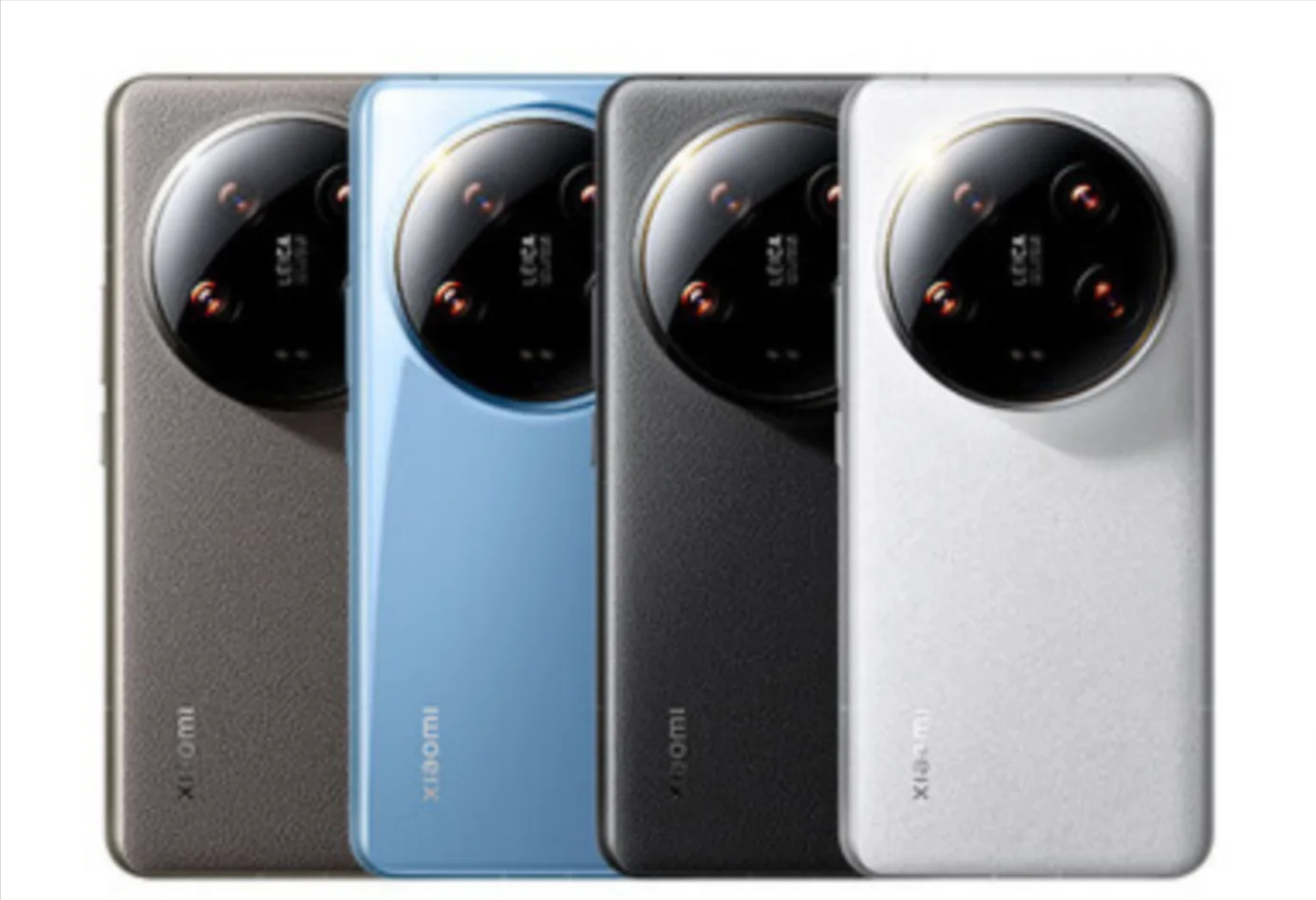
Xiaomi 14 Ultra
The Xiaomi 14 Ultra steps things up with a 6.73-inch LTPO AMOLED display boasting a QHD+ resolution (3200 x 1440 pixels, 522 PPI). Yep, that’s sharper than the iPhone’s panel, offering incredible detail. It also manages to hit an even higher peak brightness of 3000 nits, giving it an edge in super bright conditions. Like the iPhone, it supports HDR10+ and Dolby Vision, and also features a 1-120Hz adaptive refresh rate. Its flat screen design with a centered punch-hole maximizes usable screen real estate. Protection comes in the form of Xiaomi Shield Glass, which promises high durability, though it doesn’t quite have the same brand recognition as Apple’s Ceramic Shield.
Comparison: On paper, the Xiaomi 14 Ultra definitely has the edge with its higher resolution and brighter display, leading to crisper images and better visibility under direct sunlight. In real-world testing, however, the difference in sharpness is barely perceptible, and both screens deliver incredibly accurate and vibrant colors. Apple’s strength lies in its software optimization for HDR content and a consistently excellent visual experience. The Xiaomi offers a bit more in terms of display customization. Ultimately, your preference will likely hinge on whether you prioritize pure technical sharpness (Xiaomi) or a more refined, albeit slightly less bright, Apple experience.
3. Performance
iPhone 16 Pro Max
Under the hood, the iPhone 16 Pro Max is powered by Apple’s new A18 Pro chip, built on a 3nm process. This thing absolutely crushes it in both single-core and multi-core performance, and it’s remarkably efficient, outperforming many rivals. Apple officially lists 8GB of RAM (though teardowns confirm this), paired with storage options of 256GB, 512GB, or a massive 1TB (NVMe). The A18 Pro is meticulously optimized for iOS 18, ensuring a fluid experience whether you’re gaming, editing video, or dabbling with AI features like Apple Intelligence. While some early critiques suggest Apple Intelligence isn’t a game-changer yet, the underlying power is undeniable.
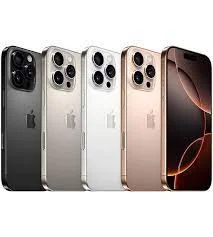
Xiaomi 14 Ultra
The Xiaomi 14 Ultra flexes with Qualcomm’s Snapdragon 8 Gen 3 processor, a powerhouse built on a 4nm process. It boasts an octa-core CPU and the Adreno 750 GPU. You can get it with a whopping 16GB of RAM (LPDDR5X) and 512GB of storage (UFS 4.0), giving it a RAM advantage over the iPhone. It runs on HyperOS, which is based on Android 14, offering extensive customization options and handling demanding tasks like gaming and heavy multitasking with ease. The Snapdragon 8 Gen 3 is very much in the same league as the A18 Pro in terms of raw power, especially for gaming and AI workloads.
Comparison: The A18 Pro in the iPhone holds a slight edge in efficiency and single-core performance, which translates to a snappier experience in everyday apps and within Apple’s tightly integrated ecosystem. However, the Xiaomi 14 Ultra, with its gruntier Snapdragon 8 Gen 3 and a massive 16GB of RAM, is arguably better equipped to handle truly demanding tasks, like running AAA games at max settings or juggling multiple heavy apps simultaneously. The choice here really boils down to whether you prefer the polished, optimized environment of iOS or the sheer flexibility of Android. The iPhone’s performance hype is certainly justified, but the Xiaomi is right there with it, arguably offering more raw power for specific use cases.
4. Cameras
iPhone 16 Pro Max
The iPhone 16 Pro Max sports a triple-camera setup:
* 48MP Main (f/1.8, sensor-shift OIS, 24mm equivalent).
* 48MP Ultra Wide (f/2.2, 13mm equivalent).
* 12MP Periscope Telephoto (f/2.8, 5x optical zoom, 120mm equivalent).
On the front, you get a 12MP sensor (f/1.9) with autofocus and OIS. Apple’s known for its computational photography, consistently producing images with natural colors, excellent dynamic range, and solid low-light performance. Night mode kicks in automatically, and that new Camera Control Button makes quick adjustments a breeze. Video capabilities are also top-notch, with 4K recording at up to 120fps in Dolby Vision, plus advanced features like ProRes and Log recording. However, it does lack a true manual Pro mode and doesn’t offer a secondary telephoto lens.

Xiaomi 14 Ultra
The Xiaomi 14 Ultra, a true Leica collaboration, boasts a quad-camera array, and get this – all four lenses are 50MP!
* Main (f/1.6-f/4.0 variable aperture, 1-inch sensor, OIS, 23mm equivalent).
* Ultra Wide (f/1.8, 12mm equivalent).
* Telephoto (f/1.8, 3.2x optical zoom, 75mm equivalent).
* Periscope Telephoto (f/2.5, 5x optical zoom, 120mm equivalent).
The front camera is a 32MP sensor (f/2.0) without autofocus. The Xiaomi really shines in versatility. That 1-inch main sensor captures significantly more light, and the robust Pro mode allows for granular manual control. Its Leica partnership brings unique shooting styles like Leica Vivid and Leica Authentic. It also supports 8K video recording and includes a dedicated macro mode.
Comparison: The Xiaomi 14 Ultra has a significant hardware advantage. With four high-resolution cameras, a larger main sensor, and more flexibility (an intermediate zoom lens, variable aperture, and a comprehensive Pro mode), it offers more creative control. In real-world tests, the Xiaomi generally captures more detailed shots, particularly at higher zoom levels and in challenging low-light conditions. Its macro mode is also superior. However, the iPhone delivers more consistent results in automatic mode, with more natural color science and a processing pipeline that appeals to the average user. For photography enthusiasts who want maximum control and versatility, the Xiaomi is the clear winner. For those who prioritize simplicity and reliable point-and-shoot results, the iPhone still holds its ground. The iPhone’s camera hype is justified by its consistency, but the Xiaomi arguably surpasses it in sheer photographic capability and versatility.
5. Battery and Charging
iPhone 16 Pro Max
The iPhone 16 Pro Max packs a 4685 mAh battery. It supports 38W wired charging and 25W MagSafe wireless charging, plus 4.5W reverse wireless charging. In our testing, it comfortably lasts over a day with moderate use. However, a full charge can take around 90 minutes, which is on the slower side compared to many Android flagships. As is Apple’s habit, they don’t include a charger in the box, which can be a bit of a bummer.
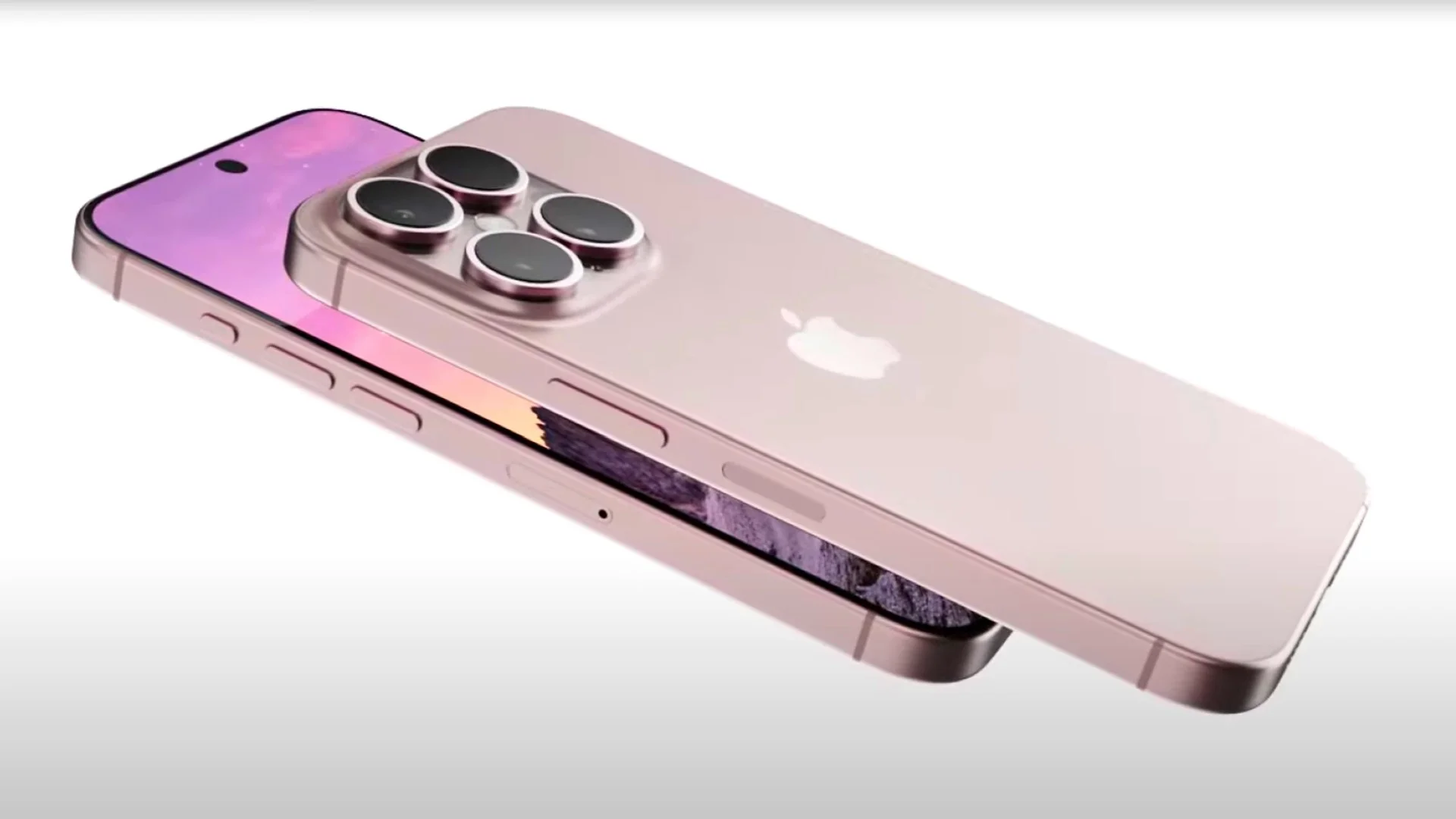
Xiaomi 14 Ultra
The Xiaomi 14 Ultra counters with a larger 5000 mAh battery. And when it comes to charging, it’s in a different league: 90W wired charging and a blazing fast 80W wireless charging, along with 10W reverse wireless charging. You can expect a full charge in roughly 33 minutes, which is seriously impressive. Battery life in our tests is comparable to, or slightly better than, the iPhone, depending on usage patterns. Plus, it actually includes that 90W charger in the box, adding a nice bit of value.
Comparison: The Xiaomi 14 Ultra clearly wins this round. It boasts a larger battery capacity and significantly faster charging speeds, both wired and wireless. The inclusion of the charger is a welcome perk. While the iPhone’s A18 Pro chip and iOS optimization do help it squeeze out excellent battery life from its smaller battery, the sheer convenience and speed of the Xiaomi’s charging setup are undeniable advantages.
6. Software and Ecosystem
iPhone 16 Pro Max
The iPhone 16 Pro Max runs iOS 18, renowned for its stability, optimization, and user-friendliness. Apple promises an impressive seven years of software updates, which is fantastic for device longevity. It includes features like Apple Intelligence, offering tools for photo editing and an improved Siri, though as mentioned, some find these new AI features less revolutionary than expected. The big draw for many is the seamless integration within the Apple ecosystem – think Apple Watch, AirPods, and Mac. This interconnectedness is a major reason for the iPhone’s premium status. However, iOS is, by nature, less customizable than Android.
Xiaomi 14 Ultra
The Xiaomi 14 Ultra runs HyperOS, built on Android 14. It’s slated to receive four years of OS updates and five years of security patches. HyperOS is highly customizable, allowing users to tweak animations, themes, and utilize AI features like HyperAI for search, writing, and generative art. On the flip side, it does come with some pre-installed bloatware, which can be a bit annoying for some users. While HyperOS has definitely improved over its predecessor, MIUI, it still doesn’t quite match the smoothness of iOS or the deep ecosystem integration Apple offers.
Comparison: iOS 18 provides a more polished and consistently smooth user experience, coupled with a longer software support lifecycle, which really adds to the iPhone’s appeal for those who value reliability. HyperOS, while offering greater versatility, can sometimes feel less refined and is limited by a shorter update window. Apple’s ecosystem is a significant advantage, but for users who crave personalization, the Xiaomi will be far more appealing. The iPhone’s software hype is well-earned due to its seamless integration and long-term support.
7. Price and Value
iPhone 16 Pro Max
The iPhone 16 Pro Max starts at a hefty $1199 for the 256GB model, with the 512GB and 1TB versions costing even more. This price tag definitely reflects Apple’s premium positioning and brand status. Remember, it doesn’t include a charger, and for some, the new Apple Intelligence features might not fully justify the premium cost. The good news is its wide global availability makes it relatively easy to get your hands on.
Xiaomi 14 Ultra
The Xiaomi 14 Ultra comes in at €1499 in Europe, which translates to roughly $1600. While it can be found for less in markets like China (around $950), that European price is steep. For that money, you get 512GB of storage and 16GB of RAM, plus that super-fast 90W charger. However, its availability is still quite limited, particularly in North America, which can be a significant barrier for many potential buyers.
Comparison: On pure specs-for-dollar, the Xiaomi 14 Ultra often offers more bang for your buck, especially in terms of RAM, storage, and charging speed, plus the inclusion of a charger. However, that European price point does diminish its value proposition somewhat. The iPhone, while more expensive upfront, benefits from its widespread availability and the strong appeal of its ecosystem. If you’re not already invested in the Apple ecosystem, the Xiaomi 14 Ultra presents a compelling hardware package for its price, provided you can actually find it.
The Verdict: Superiority or Just Hype?
After pitting these two giants against each other, the iPhone 16 Pro Max undoubtedly shines with its refined design, seamless ecosystem integration, extended software support, and consistently excellent photographic output. Its status as a prestige symbol isn’t just marketing fluff; the optimized iOS experience, the powerful A18 Pro chip, and the solid build quality all contribute to its immense popularity.
However, the Xiaomi 14 Ultra emerges as a formidable competitor, often surpassing the iPhone in key technical areas. It boasts a sharper, brighter display, a significantly more versatile camera system, a larger battery, and considerably faster charging speeds. Its focus on photography and user customization makes it an absolute dream for tech enthusiasts.
So, is the iPhone truly superior? In terms of sheer simplicity, ecosystem cohesion, and long-term software commitment, it certainly is. But the Xiaomi 14 Ultra proves that you don’t necessarily need to pay a premium for a brand name to get a top-tier device with cutting-edge hardware and advanced features, particularly for those who aren’t locked into the Apple ecosystem. The iPhone’s “hype” is largely built on a meticulously crafted user experience and cultural cachet, but the Xiaomi demonstrates that innovation and raw capability are readily available elsewhere. Ultimately, the choice boils down to your priorities: do you value brand prestige and unwavering consistency (iPhone), or cutting-edge innovation and ultimate versatility (Xiaomi)?
